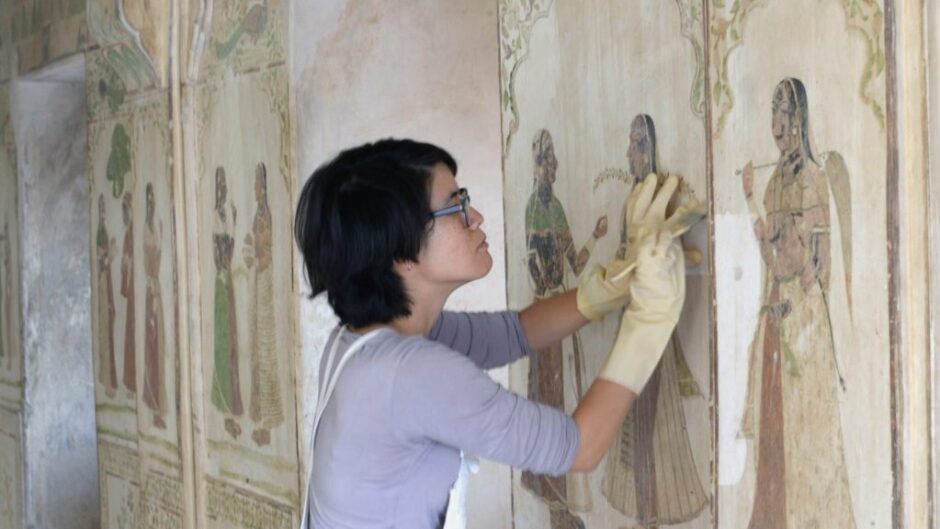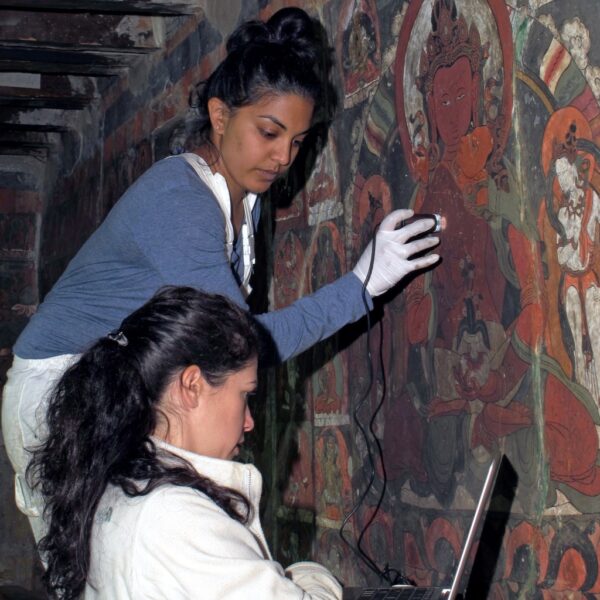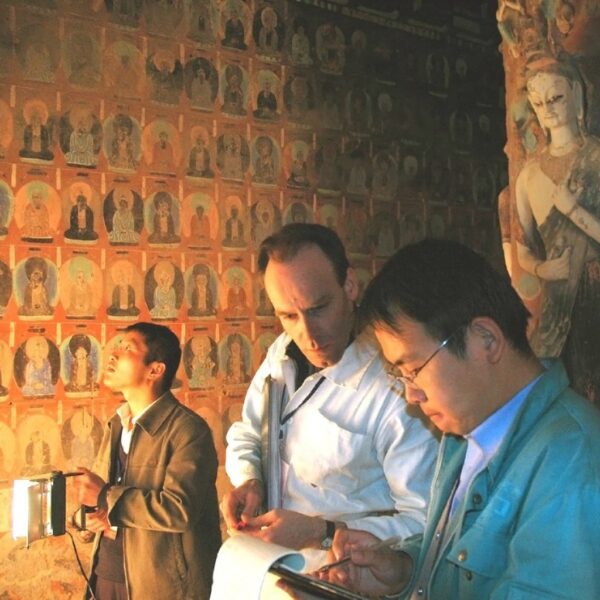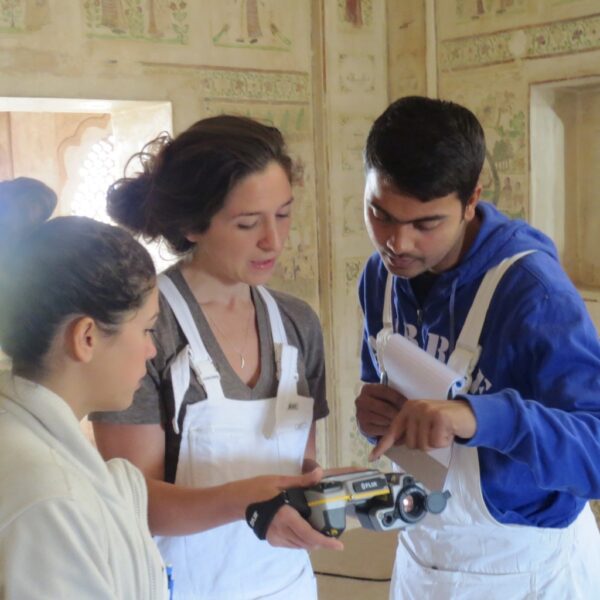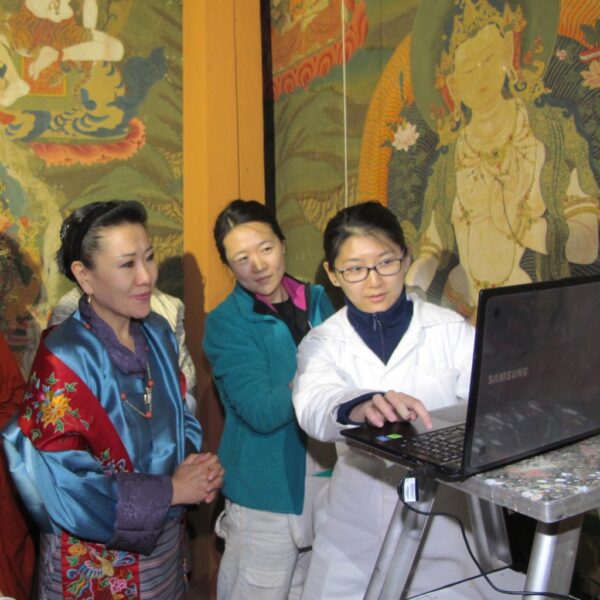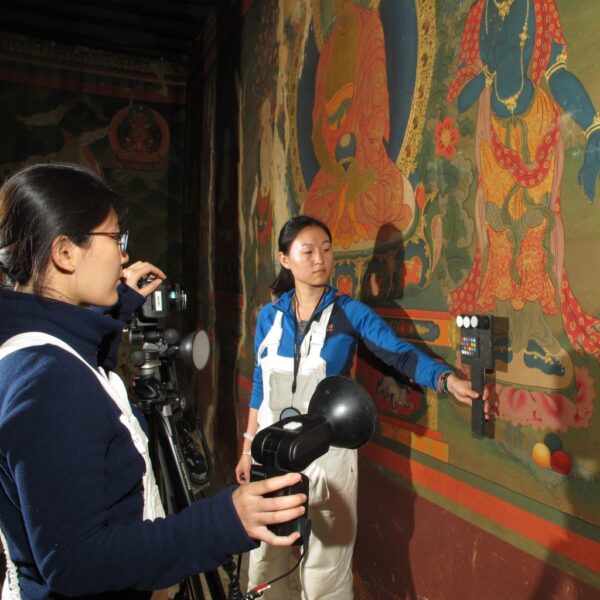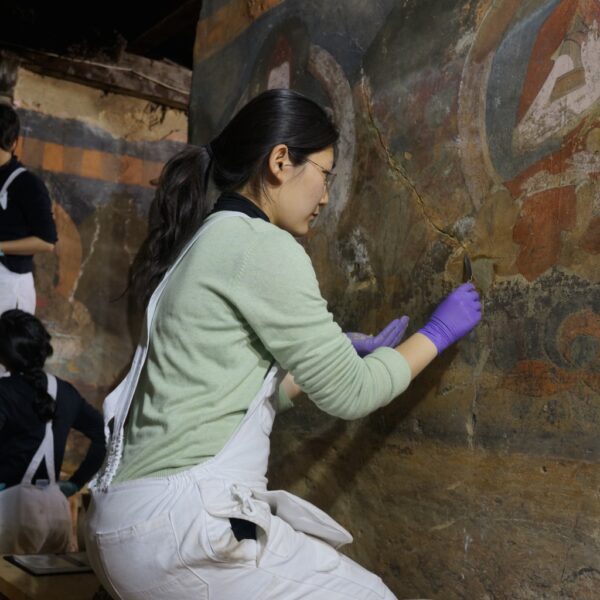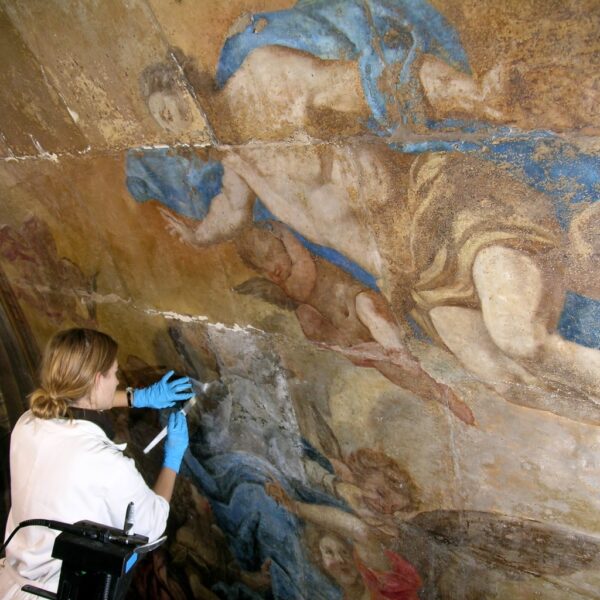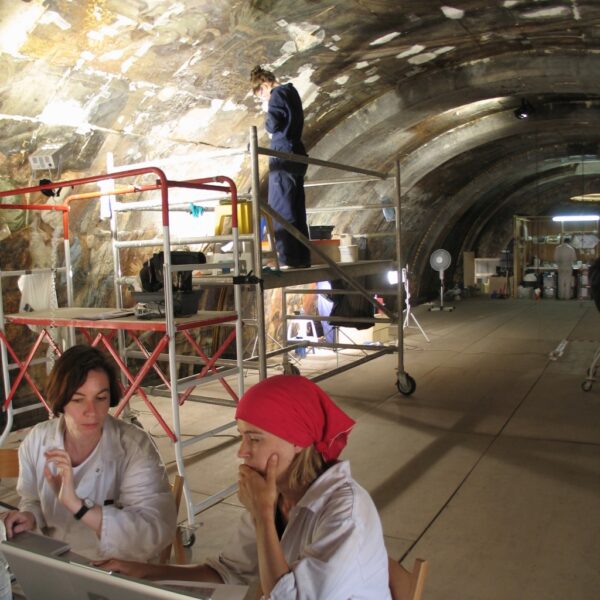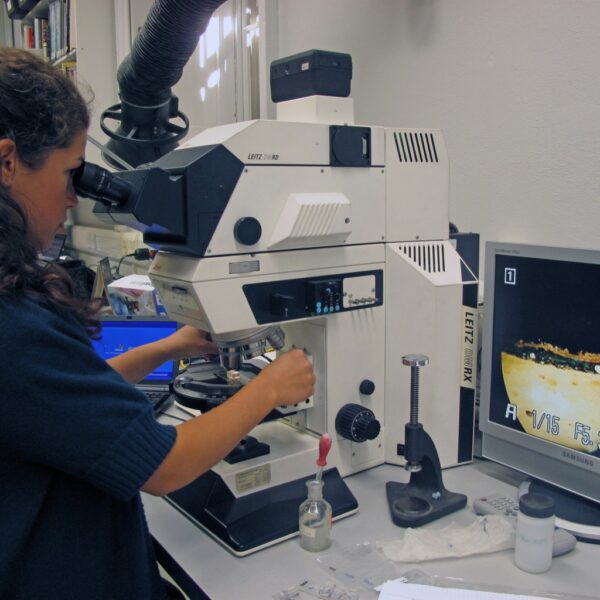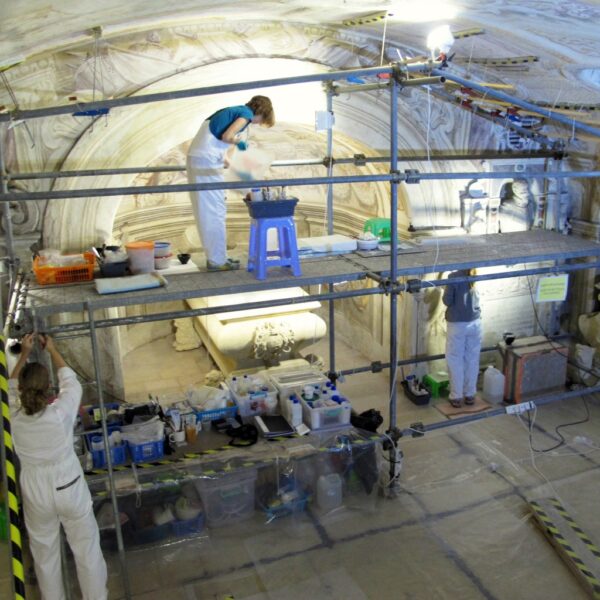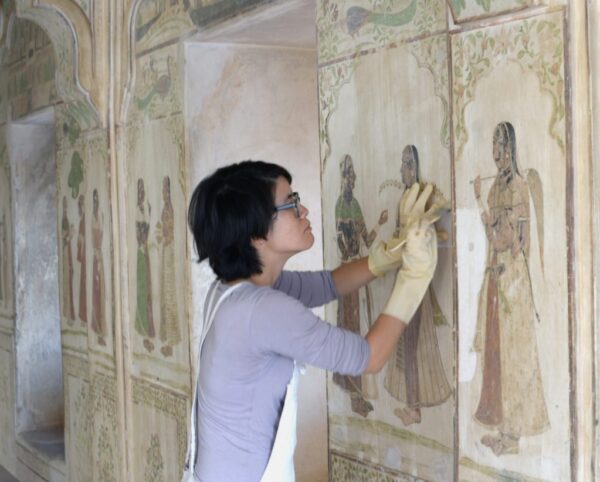Course Overview
Status
Applications will open in late November.
Location
The Conservation studios are located in Somerset House. Teaching in Conservation will be at Somerset House and at our Vernon Square campus.
Duration
3 years, full-time
Awarding body
University of London
Intake
6 students every two years
The Courtauld is a leading centre for education and research in wall painting conservation. The 3-year practical MA in Conservation of Wall Paintings will prepare you for a professional career in a field that is inclusive, interdisciplinary and international. Applicants usually have a BA or equivalent degree in the humanities or the natural sciences. The course leads to a high degree of employment upon graduation in both private practice and institutions, with many Courtauld alumni going on to make a major impact in the conservation of wall paintings and other aspects of cultural heritage through roles at leading organisations. These include the Getty Conservation Institute; International Council on Monuments and Sites (ICOMOS); ICCROM; and English Heritage.
Teaching focuses on evaluating the synergistic relationship between wall paintings, built heritage and the environment. Through a rigorous ethical and scientific framework, you will gain skills in passive, preventive and remedial conservation, and in professional practice. The MA degree offers extensive practical experience on wall painting sites, and on completion you will be able to design, evaluate and carry out conservation treatments. The course teaches the digital and organisational skills required to manage ambitious projects, both independently and in collaboration. It will equip you with critical evaluation and communication skills, so that you will be ready for a career in conservation, further conservation research, and beyond.
By the end of the course you will be able to:
- Understand, advise on, and advocate for the significance of wall paintings you are invited to examine and conserve
- Examine and assess the original and added materials on wall paintings and their support, and evaluate intervention implications
- Identify mechanisms of deterioration through diagnostic investigations, scientific analysis and environmental monitoring, and recommend and implement appropriate preventive and passive measures
- Design, test and carry out a holistic wall painting conservation programme with full awareness of ethical and technical considerations, the professional context and values
- Produce full written reports, and graphic, scientific and photographic documentation
- Propose and undertake an research project in the field of wall painting conservation
Entry requirements
UK qualifications: Students will normally have achieved a good 2.1 in a humanities or sciences Bachelor’s degree, considered to be an overall average 65% or above.
Overseas qualification: Equivalent to a good 2.1 in a UK first degree (e.g. US applicants should have a cumulative GPA of 3.5 or above).
Interviews: The interview process consists of a personal interview before a board; tests of manual dexterity and colour vision; and a brief written test requiring comment on a variety of wall paintings.
English language requirements: If your first language is not English, we require proof of English language proficiency –please see the English Language Requirements page.
Other requirements:
Previous conservation experience is not required, though some understanding of the nature of wall painting conservation is desirable. Students must have normal colour vision.
Students who do not have a degree in science will need to complete and pass an online science course in the summer prior to beginning the MA. This will be delivered online by the Courtauld.
Programme structure
Year 1: The first year provides a practical and theoretical foundation in the principles, ethics and practice of conserving wall paintings. Students learn about the technology and history of wall paintings, how to understand and identify deterioration phenomena, and methods for recording and documenting wall paintings. The application of scientific methods and materials science are integrated throughout the theoretical and practical courses. Several of the modules have substantial practical components to provide familiarity with materials, equipment and software. Foundations lectures in History of Art examining art from across the globe are also offered in the first year. Fieldwork introduces methodologies for conservation interventions and develops practical and manual skills. Visits to see important wall paintings in historic sites and museums are integrated with formal teaching.
Year 2: Formal instruction concentrates on diagnosis and preventive conservation, on technical examination of wall paintings and their supporting structures, and on the theory and materials of advanced remedial conservation techniques. Materials science is integrated throughout theoretical and practical courses. Students will develop research skills and learn about project management and professional practice. A substantial period of fieldwork is carried out in the second year.
Year 3: The third year is devoted to field work and a dissertation research project on an original aspect of the conservation of wall paintings. The dissertation may be on any aspect of the materials and techniques of wall paintings or of the methods or materials used in their conservation.
Teaching and assessment
Teaching: Continuity in instruction and supervision is provided by members of the department of Conservation with additional supervision and teaching by established practitioners and leading international specialists. The various teaching methods and types of work required of the students relate to the objectives of each component of the programme and include lectures, seminars with student presentations, seminars, essays, and reports. Practical work takes place in the laboratory and on site. There are also regular meetings with your personal tutor to discuss progress and general issues, and to receive feedback after presentations.
Assessment: Both formal and informal mechanisms of assessment are used. Formal assessment comprises assessed coursework and practical work with written examinations and practical oral examinations. Informal, continuous assessment is based on didactic exercises—essays, seminars, revision questions, etc.—and supervision of practical work. Students must demonstrate competence in each of the subject areas in order to progress into the second year.
At the end of the first and second years, students sit written examinations on modules and viva voce examinations on their fieldwork.
Assessment of the third year is based on the examination of the dissertation, fieldwork and an oral examination. The final degree mark is calculated from the second and third year marks.
Fieldwork
The department’s fieldwork projects focus on conservation, research and teaching. A high supervisor-to-student ratio ensures that students benefit from an excellent level of supervision.
Current and past projects include:
· Longthorpe Tower, Peterborough (UK) A rare cycle of 14th-century domestic wall paintings (2019 – )
· Villa Imperiale, Pesaro (Italy) 16th-century wall paintings in a grand villa originally constructed for the Sforza family and updated by the Della Rovere family in the 16th century (2023 -)
· Nagaur Fort, Rajasthan (India) The 18th-century wall paintings decorating the Maharajah’s palaces (2005 – )
· Tamzhing Monastery, Bumthang (Bhutan) With schemes from the 16th to 20th centuries, those from the early 16th-century are thought to be the earliest surviving in the Kingdom (2012 – 2015)
· Church of the Dormition of the Virgin, Vardzia (Georgia) The late 12th-century wall paintings in the rock-cut monastery (2012 – 2015)
· Mogao Grottoes, Dunhuang (China) A site with over 500 painted cave temples dating from the 5th to 14th centuries (2006 – 2009)
· Monastery of Agios Ioannis Lampadistis, Kalopanayiotis (Cyprus) Paintings dating from the 13th to the 19th centuries (2007 – 2012)
· Crypt of the Grand Masters, St John’s Co-Cathedral, Valletta (Malta) 18th-century wall paintings by Niccolò Nasoni (2003 – 2012)
Further information on the department’s fieldwork activity can be found here, on our research pages.
Resources
The Conservation Department is equipped with extensive scientific laboratories and state-of-the-art facilities for the analysis of paintings and wall paintings. Both portable and bench-top equipment at the department are available for teaching and research. The department houses major collections of easel painting samples, X-radiographs, wall painting fragments and wall painting samples from around the world. It also hosts the archive of the National Wall Paintings Survey, an invaluable resource which is currently in the process of being digitised.
Students benefit from access to a wide range of research facilities at both the institute and other parts of the University of London, as well as other major libraries nearby. Close collaboration with scientists and conservators in the national museums and heritage organisations offers further opportunities for training and research.
The department is closely linked with The Robert H. N. Ho Family Foundation Centre for Buddhist Art and Conservation at the Courtauld, and the specialist collection of literature on Asian art. Both the Conservation Department and the Ho Centre periodically hold conferences and public lectures in association with the Research Forum and museums and other institutions from outside The Courtauld, and benefit from contributions by Visiting Conservators.
In recognition of the excellence of The Courtauld’s MA in Conservation of Wall Paintings, The J. Paul Getty Trust awarded a $5 million endowment to support scholarships and fieldwork.
Fees and funding
Tuition fees are available to view here.
Financial support for your studies:
Courtauld Institute of Art Scholarships: Scholarships are awarded on the basis of academic merit combined with financial need. The average postgraduate scholarship awarded in 2022/23 was £6,000. Applications are welcomed from Home, EU and Overseas students applying to or currently studying in 2023/24.
Alumni Loyalty Scheme: This scheme is open to any graduate of The Courtauld Institute of Art admitted to a taught postgraduate programme of study. Recipients will receive a 10% loyalty discount off their tuition fee for the duration of the course.
Please note students on this programme are not eligible for Master’s Loan by the UK government.
All the travel and accommodation costs for fieldwork are paid by the Department.
Careers and employability
The course is designed to produce graduates who are prepared for a professional career in the conservation of wall paintings, but also will equip you with highly transferable skills for a wide range of employment opportunities, or further academic study. As well as being equipped with a detailed knowledge and understanding of the conservation of wall paintings, our graduates will gain:
· The ability to communicate effectively orally and in writing
· Intellectual independence and maturity; self-discipline and self-direction
· Project management skills, through developing, conducting, and managing conservation and research projects independently
· Ability to work in a team, collaborate and share resources.
With these skills, Courtauld graduates go on to work in a range of prominent heritage contexts such as Historic Royal Palaces, the National Trust, Historic England.
Support
To support you through the degree, we offer:
Wellbeing: We have a dedicated Wellbeing team, with counsellors and advisors.
Academic and practical skills: You will be offered consistent access to your personal tutor and the academic teaching staff. The small number of students allow us to create an exceptionally supportive environment.
